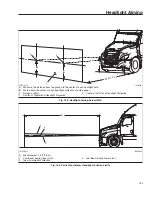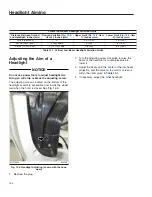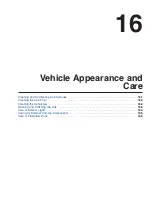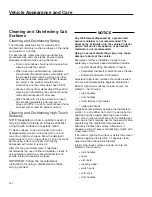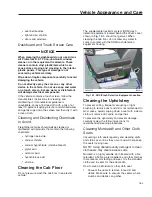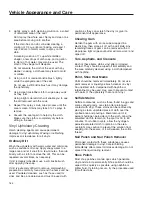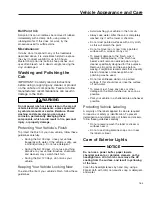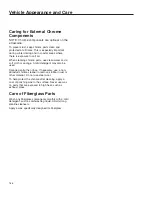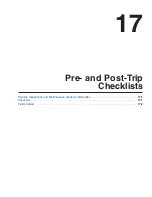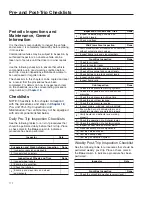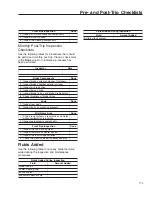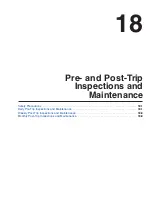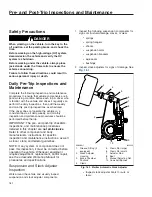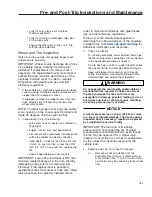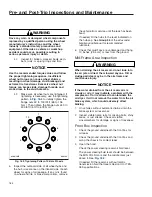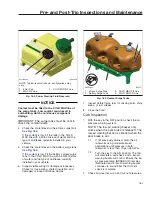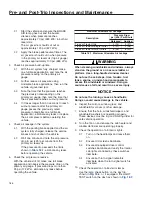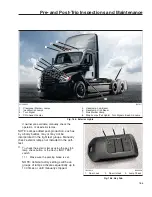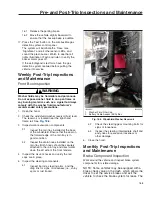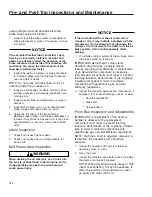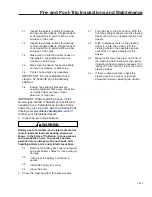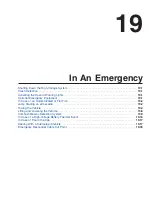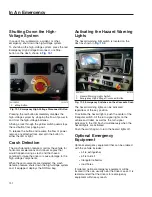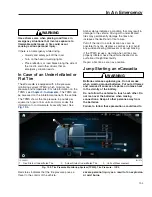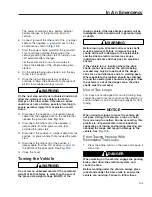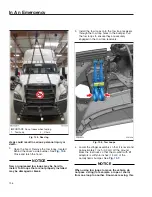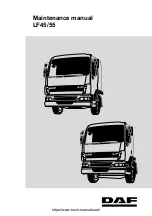
•
Look for worn clevis pins on brake
chamber pushrods.
•
Look for missing or damaged cotter pins
on the clevis pins.
•
Ensure chamber piston rods are in line
with the slack adjusters.
Wheel and Tire Inspection
Walk around the vehicle and visually inspect each
wheel and tire assembly.
IMPORTANT: Wheel covers decrease drag force
as a vehicle moves, thereby improving fuel
efficiency. If replacement of a wheel cover is
necessary, the replacement cover must meet or
exceed the drag reduction performance of the
originally installed cover in order to maintain
compliance with greenhouse gas and fuel
efficiency regulations.
1.
If the vehicle was originally equipped with wheel
covers, ensure all wheel covers are present and
inspect them for damage or wear.
If equipped, remove the wheel covers from rear
drive wheels prior to inspecting the tires and
wheel components.
NOTE: To install a wheel cover, align the center
cover opening on the cover support bracket and
rotate 60 degrees until the cover latches.
2.
Inspect each tire for the following:
•
valve stem caps on every tire, screwed on
finger-tight
•
bulges, cracks, cuts, and penetrations
•
oil contamination (petroleum derivatives will
soften the rubber and destroy the tire)
•
tread depth—if tread is less than 4/32 inch
(3 mm) on any front tire, or less than 2/32
inch (1.5 mm) on any rear tire, replace the
tire
•
debris lodged between dual tire sets
IMPORTANT: Low-rolling resistance (LRR) tires
minimize wasted energy as a tire rolls, thereby
decreasing rolling effort and improving fuel
efficiency. If tire replacement is necessary,
replacement tires must meet or have less rolling
resistance than the originally installed tires in
order to maintain compliance with greenhouse
gas and fuel efficiency regulations.
Contact your tire manufacturer/supplier to
determine the rolling resistance of the originally
installed tires. Visit
for
additional information and resources.
3.
Check tire inflation.
For inflation pressures and maximum loads, see
the tire manufacturer’s guidelines. Inflate the tires
to the applicable pressures if needed.
If a tire has been run flat or under-inflated, check
the wheel and tire for damage before adding air.
Keep compressed air reservoirs and lines dry
during tire inflation. Use well-maintained inline
moisture traps and service them regularly.
WARNING
Do not operate the vehicle with underinflated or
overinflated tires. Incorrect inflation can stress
the tires and make the tires and rims more
susceptible to damage, possibly leading to rim or
tire failure and loss of vehicle control, resulting
in serious personal injury or death.
NOTICE
A weekly pressure loss of 4 psi (28 kPa) or more
in a tire may indicate damage. The tire should be
inspected and, if necessary, repaired or replaced
by a qualified tire service facility.
IMPORTANT: The load and cold inflation
pressure must not exceed the rim or wheel
manufacturer’s recommendations, even though
the tire may be approved for a higher load
inflation. Consult the rim or wheel manufacturer
for the correct tire inflation pressure for the
vehicle load.
4.
Examine each rim and wheel component.
4.1
Remove all dirt and debris from the
assembly. Rust streaks or metal build-up
around stud holes, or out-of-round or worn
stud holes, may be caused by loose wheel
nuts.
Pre- and Post-Trip Inspections and Maintenance
18.2
Summary of Contents for PX113064S T 2016
Page 4: ......
Page 10: ......
Page 18: ......
Page 58: ......
Page 86: ......
Page 112: ......
Page 122: ......
Page 142: ......
Page 154: ......
Page 155: ...12 Steering System Power Steering System 12 1...
Page 158: ......
Page 159: ...13 eAxle eAxle 2 Speed Transmission 13 1...
Page 176: ......
Page 190: ......
Page 202: ......
Page 222: ......
Page 223: ...20 Emissions Information Noise Emissions 20 1 Greenhouse Gas Emissions 20 1...
Page 229: ......
Page 236: ......

